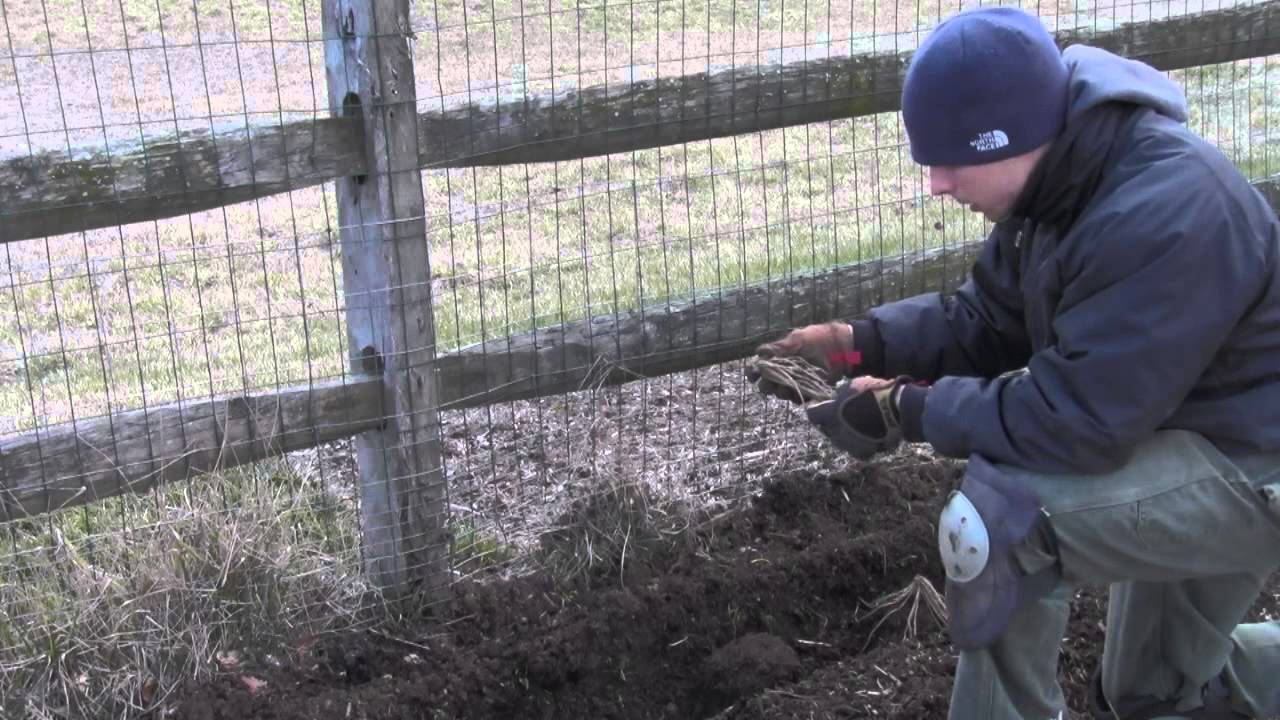Asparagus is one of my favorite garden plants. It is the first vegetable to harvest in the spring, it’s perennial, and it tastes great. What more could you ask for?
Most people establish an asparagus patch with bare-root asparagus plants. It is best to plant in early spring as soon as the soil is warm enough to work. I would not harvest any asparagus spears the first season. Just let it grow, and cut it back in the late fall when the ferns go brown. You should be able to harvest the following spring. The herbs caraway and basil make nice companions. I will be seeding in caraway amongst the patch in mid-April and basil after the fear of frost has past. (Video at the bottom of the article)
Asparagus Spears
Setting up an Asparagus Patch
1. Dig a trench 8 inches deep and 1 foot wide. Dig your trench long enough that you can space your asparagus roots 1 foot apart.
8 inch deep trench, 1 foot wide
2. Make mounds of soil to rest the crown of the asparagus plant on, and spread the roots out gently on the mound.
Asparagus roots spread out over mounds
3. Water your asparagus roots.
4. Backfill with the existing soil. The crown or growing point of the asparagus plant should be 1 inch under the soil.
5. Add 1-2 inches of mulch to suppress weeds. Make sure any existing weeds are removed. Weeds can ruin an asparagus patch as the roots can get tangled.
6. Give the patch another good watering.
Mulched, watered...done
Video: How to Plant Asparagus
Additional Resources
Heeling In: Description of "heeling in" your bare root plants for the proper planting time: http://groworganic.com/media/pdfs/asparagus-l.pdf
Ordering Asparagus Crowns Online
http://www.groworganic.com/seasonal-items/vegetable-crowns/asparagus-crowns.html
http://www.territorialseed.com/category/s?keyword=asparagus
~ Phil Williams
Phil Williams is a permaculture consultant and designer and creator of the website foodproduction101.com. His website provides useful, timely information for the experienced or beginning gardener, landscaper, or permaculturalist. Phil's personal goals are to build soil, restore and regenerate degraded landscapes, grow and raise an abundance of healthy food of great variety, design and install resilient permaculture gardens in the most efficient manner possible, and teach others along the way.
This is a companion discussion topic for the original entry at https://peakprosperity.com/planting-asparagus/
